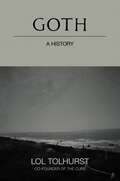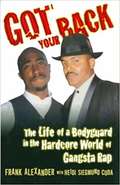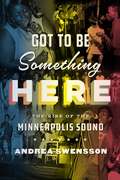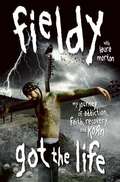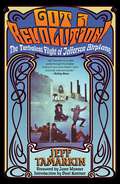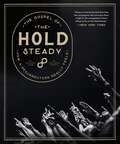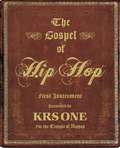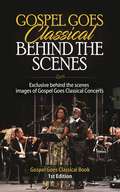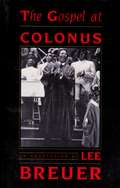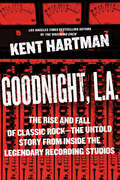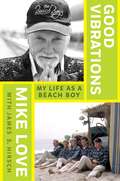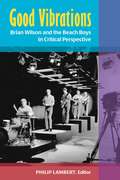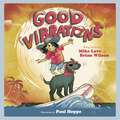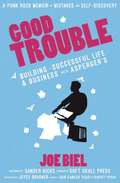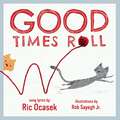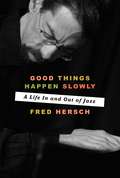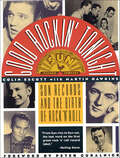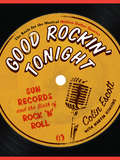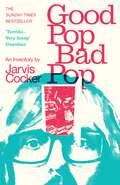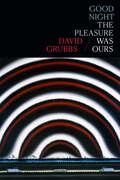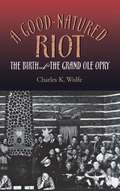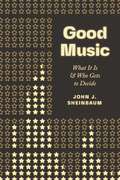- Table View
- List View
Goth: A History
by Lol TolhurstThe co-founder of The Cure and author of Cured delivers a fascinating deep dive into the dark romanticism of Goth music, a misunderstood genre and culture. GOTH is an entertaining and engaging historical memoir, and a journey through Goth music and culture, exploring creative giants like The Cure, Siouxsie and the Banshees, Bauhaus, Joy Division, and many more great bands that offered a place of refuge for the misfits of the &‘80s and ever since. Written by Lol Tolhurst, co-founder of The Cure, this book offers a riveting retrospective of the genre&’s iconic movers and shakers, infused with stories from Tolhurst&’s personal trove of memories, as well as anecdotes about the musicians, magicians, and artists who made it all happen—the people, places, and things that made Goth an inevitable and enduring movement. Starting with the Origins of Goth, Tolhurst explores early art and literature that inspired the genre and looks into the work of T.S Eliot, Edgar Allan Poe, Sylvia Plath, and Albert Camus, among others. He also outlines the path of Gothic Forebears and shows how many musicians played in punk bands before transitioning into Goth endeavors. Next, he introduces readers to the &“Architects of Darkness&”—Bauhaus, Siouxsie and the Banshees, Joy Division, and The Cure—the Godfathers of Goth who established the genre's roots. Following these early bands, Tolhurst discusses a group he calls the &“Spiritual Alchemists,&” consisting of bands like Depeche Mode, Cocteau Twins, and more, who helped the darkness expand into the culture. He also tracks the expansion of the genre overseas, from England to New York, Los Angeles, and beyond. Gothic fashion was an important part of the movement as well, and Tolhurst discusses the clothing that accompanied and complemented the music. Finally, Tolhurst examines the legacy of Goth music, and shows how its influence can still be seen to this day across music, film, TV, visual arts, social media, and more. As thoughtful and thorough as it is utterly bewitching, GOTH is a timeless testament to why Goth matters—and why it always will.
Got Your Back: Protecting Tupac in the World of Gangsta Rap
by Heidi Cuda Frank AlexanderOn September 13, 1996, Tupac Shakur was shot and killed in Las Vegas. Millions of fans wept, while many critics claimed it was the inevitable result of a thugged-out lifestyle. The mystery surrounding the shooting-a suspect has yet to be named-has increased, and rumors of gang wars, disloyalty, and government conspiracies continue to linger. Only Frank Alexander, Tupac's bodyguard druing the last year of his life, knows the real story. Got Your Back details the exploits of one of the most famous rappers of all time. The drugs, the women, the violence, the money-all provided fuel to the fire that was Tupac's life. As his platinum-selling, posthumously released albums prove, Tupac lives on through his music. Complete with exclusive new interview material with Tupac's mother, Afeni, Got Your Back provides an insider's view of a life gone awry.
Got to Be Something Here: The Rise of the Minneapolis Sound
by Andrea SwenssonBeginning in the year of Prince’s birth, 1958, with the recording of Minnesota’s first R&B record by a North Minneapolis band called the Big Ms, Got to Be Something Here traces the rise of that distinctive sound through two generations of political upheaval, rebellion, and artistic passion.Funk and soul become a lens for exploring three decades of Minneapolis and St. Paul history as longtime music journalist Andrea Swensson takes us through the neighborhoods and venues, and the lives and times, that produced the Minneapolis Sound. Visit the Near North neighborhood where soul artist Wee Willie Walker, recording engineer David Hersk, and the Big Ms first put the Minneapolis Sound on record. Across the Mississippi River in the historic Rondo district of St. Paul, the gospel-meets-R&B groups the Exciters and the Amazers take hold of a community that will soon be all but erased by the construction of I-94. From King Solomon’s Mines to the Flame, from The Way in Near North to the First Avenue stage (then known as Sam’s) where Prince would make a triumphant hometown return in 1981, Swensson traces the journeys of black artists who were hard-pressed to find venues and outlets for their music, struggling to cross the color line as they honed their sound. And through it all, there’s the music: blistering, sweltering, relentless funk, soul, and R&B from artists like Maurice McKinnies, Haze, Prophets of Peace, and The Family, who refused to be categorized and whose boundary-shattering approach set the stage for a young Prince Rogers Nelson and his peers Morris Day, André Cymone, Jimmy Jam, and Terry Lewis to launch their careers, and the Minneapolis Sound, into the stratosphere. A visit to Prince’s Paisley Park and a conversation with the artist provide a rare glimpse into his world and an intimate sense of his relationship to his legacy and the music he and his friends crafted in their youth.
Got the Life: My Journey of Addiction, Faith, Recovery, and Korn
by FieldyWhat have you got when you Got the Life? From Korn's legendary bassist comes a no-holds-barred look at the extreme highs and drug-and-booze-fueled lows of the biggest heavy metal band of our era Music was in his bones. From the time he was an infant, Fieldy watched his dad's band perform, and soon enough he found his own calling: the bass. After high school, with a guitar and little else, he left his small California town for the music scene in L.A. Before long, Fieldy, Brian "Head" Welch, James "Munky" Shaffer, drummer David Silveria, and Jonathan Davis would gel together and form a band with a completely new sound-Korn. What happened next was something Fieldy had always dreamed of but was totally unprepared for: Korn exploded, skyrocketing to the top of the charts and fronting the nu metal phenomenon. Fieldy was thrust into the fast-paced, hard-rocking spotlight. Korn began to tour incessantly, creating intense live shows fueled by wild offstage antics. Fieldy became a rock star, and he acted like one, notorious not only for his one-of-a-kind bass lines, but also for his hard-partying, womanizing, bad-boy ways. The more drugs he took, the more booze he drank, the worse he became: He was unfaithful, abusive, mean, and sometimes violent. By all appearances, Fieldy had the life. But he was on the dark path of excess, alienating friends, families, and loved ones, nearly destroying himself and the band. It took an unexpected tragedy to straighten him out: the death of his father, a born-again Christian, to a mysterious illness. Following his father's dying wish, Fieldy found God. Filled with the spirit of his new faith, Fieldy quit drugs and drinking cold turkey, and found the best part of himself. With never-before-seen photos, and never-before-heard stories, Got the Life is raw, candid, and inspiring-the ultimate story of rock and redemption.
Got a Revolution!: The Turbulent Flight of Jefferson Airplane
by Jeff TamarkinThe most successful and influential rock band to emerge from San Francisco during the 1960s, Jefferson Airplane created the sound of a generation. Their smash hits "Somebody to Love" and "White Rabbit" virtually invented the era's signature pulsating psychedelic music and, during one of the most tumultuous times in American history, came to personify the decade's radical counterculture. In this groundbreaking biography of the band, veteran music writer and historian Jeff Tamarkin produces a portrait of the band like none that has come before it. Having worked closely with Jefferson Airplane for more than a decade, Tamarkin had unprecedented access to the band members, their families, friends, lovers, crew members, fellow musicians, cultural luminaries, even the highest-ranking politicians of the time. More than just a definitive history, Got a Revolution! is a rock legend unto itself. Jann Wenner, editor-in-chief and publisher of Rolling Stone, wrote, "The classic [Jefferson] Airplane lineup were both architects and messengers of a psychedelic age, a liberation of mind and body that profoundly changed American art, politics, and spirituality. It was a renaissance that could only have been born in San Francisco, and the Airplane, more than any other band in town, spread the good news nationwide."
The Gospel of The Hold Steady: How A Resurrection Really Feels
by The Hold Steady Michael HannAn oral history (with photographs) of the greatest American bar band of the twenty-first century ON JANUARY 22, 2003, four men stepped onto a stage in Brooklyn and did something no one else was doing at that time, in that place. They played rock ’n’ roll: old-fashioned rock ’n’ roll with skyscraping riffs and sloppy solos, topped with extraordinary lyrics about an out-of-focus America, blurred by pills and powders, of crime and fear and desperation and redemption. Twenty years later, The Hold Steady are one of America’s most beloved rock bands, famed for live shows that turn unbelievers into converts, and for a catalog filled with some of the most exciting yet poetic music of the twenty-first century. To mark those twenty years, The Hold Steady tell their full story in The Gospel of The Hold Steady: How a Resurrection Really Feels. An oral history, based on interviews with everyone who has played in the band, and those who have worked with them over the course of their career, The Gospel of the Hold Steady addresses all the triumphs and setbacks of The Hold Steady’s career in the band’s own words—from high times to near deaths, from the brink of splitting to their current renaissance. The volume also includes over 200 photographs and images. The Gospel of The Hold Steady is completed by essays about America’s greatest bar band by writers Rob Sheffield, Laura Barton, Isaac Fitzgerald, and Michael Hann, as well as the thoughts and memories of “The Unified Scene”—the fans who have helped define the band’s identity over the years. This is a book for everyone who loves The Hold Steady, and anyone who understands that the magic of rock ’n’ roll happens on a stage in a small room, with voices raised from the crowd.
The Gospel of Hip Hop: The First Instrument
by Krs OneThe Gospel of Hip Hop: First Instrument, the first book from theI Am Hip Hop, is the philosophical masterwork of KRS ONE. Set in the format of the Christian Bible, this 800-plus-page opus is a life-guide manual for members of Hip Hop Kulture that combines classic philosophy with faith and practical knowledge for a fascinating, in-depth exploration of Hip Hop as a life path. Known as “The Teacha,” KRS ONE developed his unique outlook as a homeless teen in Brooklyn, New York, engaging his philosophy of self-creation to become one of the most respected emcees in Hip Hop history. Respected as Hip Hop’s true steward, KRS ONE painstakingly details the development of the culture and the ways in which we, as “Hiphoppas,” can and should preserve its future. "The Teacha" also discusses the origination of Hip Hop Kulture and relays specific instances in history wherein one can discover the same spirit and ideas that are at the core of Hip Hop’s current manifestation. He explains Hip Hop down to the actual meaning and linguistic history of the words “hip” and “hop,” and describes the ways in which "Hiphoppas" can change their current circumstances to create a future that incorporates Health, Love, Awareness, and Wealth (H-LAW). Committed to fervently promoting self-reliance, dedicated study, peace, unity, and truth, The "Teacha" has drawn both criticism and worship from within and from outside of Hip Hop Kulture. In this beautifully written, inspiring book, KRS ONE shines the light of truth, from his own empirical research over a 14-year period, into the fascinating world of Hip Hop.
Gospel Goes Classical Behind the Scenes: Exclusive Behind the Scenes Images of Gospel Goes Classical Concerts. (Gospel Goes Classical Book 1st Edition #1)
by Steve LaneExclusive Behind the Scenes Images of Gospel Goes Classical Concerts.
The Gospel at Colonus
by Lee BreuerA founding member of the acclaimed New York-based company Mabou Mines, Breuer's gifts as a writer and director have have made him a mainstay of the theatrical avant-garde.
Goodnight, L.A.: The Rise and Fall of Classic Rock--The Untold Story from inside the Legendary Recording Studios
by Kent HartmanA behind-the-scenes journey through the rise and demise of the '70s and '80s classic rock eraBefore disco, punk, hair metal, rap, and eventually grunge took it all away, the music scene in Los Angeles was dominated by rock 'n' roll. If a group wanted to hit it big, L.A. was the place to be. But in addition to the bands themselves finding their footing, their albums also needed some guidance. That came from a group of dedicated producers and engineers working in a cadre of often dilapidated-looking buildings that contained some of the greatest recording studios the music industry has ever known.Within the windowless walls of these well-hidden studios, legends-to-be such as Foreigner, Fleetwood Mac, Pat Benatar, Boston, the Eagles, the Grateful Dead, Chicago, Linda Ronstadt, Santana, Tom Petty and the Heartbreakers, Loggins and Messina, REO Speedwagon, and dozens more secretly created their album masterpieces: Double Vision. Rumours. Hotel California. Terrapin Station. Damn the Torpedoes. Hi Infidelity. However, the truth of what went on during these recording sessions has always remained elusive. But not anymore.Longtime music-business insider Kent Hartman has filled Goodnight, L.A. with troves of never-before-told stories about the most prolific and important period and place in rock 'n' roll history. With music producer Keith Olsen and guitarist Waddy Wachtel as guides to the journey and informed by new, in-depth interviews with classic rock artists, famed record producers, and scores of others, Goodnight, L.A. reveals what went into the making of some of the best music of the past forty years. Readers will hear how some of their favorite albums and bands came to be, and ultimately how fame, fortune, excess, and a shift in listener demand brought it all tumbling down.
Goodbye Russia: Rachmaninoff in Exile
by Fiona MaddocksThe moving story of Rachmaninoff's years in exile and the composition of his last great work, set against a cataclysmic backdrop of two world wars and personal tragedy.In 1940, Sergei Rachmaninoff, living in exile in America, broke his creative silence and composed a swan song to his Russian homeland—his iconic &“Symphonic Dances.&” What happened in those final haunted years and how did he come to write his farewell masterpiece? Rachmaninoff left Petrograd (now St. Petersburg) in 1917 during the throes of the Russian Revolution. He was forty-four years old, at the peak of his powers as composer-conductor-performer, moving in elite Tsarist circles, as well as running the family estate, his refuge and solace. He had already written the music which, today, has made him one of the most popular composers of all time: the second and third Piano Concertos and two symphonies. The story of his years in exile in America and Switzerland has only been told in passing. Reeling from the trauma of a life in upheaval, he wrote almost no music and quickly had to reinvent himself as a fêted virtuoso pianist, building up untold wealth and meeting the stars—from Walt Disney and Charlie Chaplin to his Russian contemporaries and polar opposites, Prokofiev and Stravinsky. Yet the melancholy of leaving his homeland never lifted. Using a wide range of sources, including important newly translated texts, Fiona Maddocks&’s immensely readable book conjures impressions of this enigmatic figure, his friends and the world he encountered. It explores his life as an emigré artist and how he clung to an Old Russia which no longer existed. That forging of past and present meets in his Symphonic Dances (1940), his last composition, written on Long Island shortly before his death in Beverly Hills, surrounded by a close-knit circle of exiles. Goodbye Russia is a moving and prismatic look at Rachmaninoff and his iconic final work.
Goodbye 20th Century: A Biography of Sonic Youth
by David BrowneSonic Youth's distinctive, uncompromising sounds have provided a map for innumerable musicians who followed, from '90s groundbreakers like Nirvana and Pavement to current faves like the Strokes and the Yeah Yeah Yeahs. More than perhaps any other act, Sonic Youth has brought "fringe" art to the mainstream, helping spawn an alternative arts scene that prospers to this day: a world of punk rock, underground films and comics, experimental music, conceptual art, contemporary classical compositions, and even fashion. In Goodbye 20th Century, David Browne tells the full glorious story of "the Velvet Underground of their generation," an account based on extensive research, fresh interviews with the band and those who have worked with them (from Glenn Branca and Lydia Lunch to Sofia Coppola and Spike Jonze), and unprecedented access to unreleased recordings and documents. This is a richly detailed portrait of an iconic band and the times they helped create.
Good Vibrations: My Life as a Beach Boy
by James S. Hirsch Mike Love<P>Mike Love tells the story of his legendary, raucous, and ultimately triumphant five-decade career as the front man of The Beach Boys, the most popular American band in history -- timed to coincide with the 50th anniversary of "Good Vibrations." The eBook edition includes 85 additional photos. <P>As a founding member of The Beach Boys, Mike Love has spent an extraordinary fifty-five years, and counting, as the group's lead singer and one of its principal lyricists. The Beach Boys, from their California roots to their international fame, are a unique American story -- one of overnight success and age-defying longevity; of musical genius and reckless self-destruction; of spirituality, betrayal, and forgiveness -- and Love is the only band member to be part of it each and every step. His own story has never been fully told, of how a sheet-metal apprentice became the quintessential front man for America's most successful rock band, singing in more than 5,600 concerts in 26 countries. <P>Love describes the stories behind his lyrics for pop classics such as "Good Vibrations," "California Girls," "Surfin' USA," and "Kokomo," while providing vivid portraits of the turbulent lives of his three gifted cousins, Brian, Dennis, and Carl Wilson. His partnership with Brian has few equals in American pop music, though Mike has carved out a legacy of his own -- he co-wrote the lyrics to eleven of the twelve original Beach Boy songs that were top 10 hits while providing the lead vocals on ten of them. <P>The band's unprecedented durability also provides a glimpse into America's changing cultural mores over the past half century, while Love himself has experienced both the diabolical and the divine -- from Charles Manson's "family" threatening his life to Maharishi instilling it with peace. A husband, a father, and an avid environmentalist, Love has written a book that is as rich and layered as the Beach Boy harmonies themselves. <P><b>A New York Times Bestseller</b>
Good Vibrations: Brian Wilson and the Beach Boys in Critical Perspective
by Philip LambertGood Vibrations brings together scholars with a variety of expertise, from music to cultural studies to literature, to assess the full extent of the contributions to popular culture and popular music of one the most successful and influential pop bands of the twentieth century. The book covers the full fifty-year history of the Beach Boys' music, from essays on some of the group's best-known music--such as their hit single "Good Vibrations" --to their mythical unfinished masterpiece, Smile. Throughout, the book places special focus on the individual whose creative vision brought the whole enterprise to life, Brian Wilson, advancing our understanding of his gifts as a songwriter, arranger, and producer. The book joins a growing body of literature on the popular music of the 1960s, in general, and on Brian Wilson and the Beach Boys in particular. But Good Vibrations extends the investigation further and deeper than it has gone before, not only offering new understanding and insights into individual songs and albums, but also providing close examination of compositional techniques and reflections on the group's place in American popular culture.
Good Vibrations: A Children's Picture Book (LyricPop #0)
by Brian Wilson Mike LoveMike Love and Brian Wilson's world-famous song, gloriously illustrated by Paul Hoppe, will bring smiles to the faces of children and parents alike. I'm pickin' up good vibrations She's giving me the excitations (oom bop bop)
Good Trouble: Building a Successful Life and Business with Asperger's (Punx Ser.)
by Sander Hicks Joe Biel Joyce Brabner<p>In 1996, everything about Joe Biel's life seemed like a mistake. He was 18, he lived in Cleveland, he got drunk every day, and he had mystery health problems and weird social tics. <p>All his friends' lives were as bad or worse. To escape a nihilistic, apocalyptic worldview and to bring reading and documentation into a communal punk scene, he started assembling zines and bringing them in milk crates to underground punk shows. Eventually this became Microcosm Publishing. But Biel's head for math was stronger than his ability to relate to people, and it wasn't until he was diagnosed with Asperger's Syndrome that it all began to fall into place. <p>This is the story of how, over 20 years, one person turned a litany of continuing mistakes and seeming wrong turns into a happy, fulfilled life and a thriving publishing business that defies all odds.</p>
Good Times Roll: A Children's Picture Book (LyricPop #0)
by Ric OcasekRic Ocasek's rock and roll classic, "Good Times Roll"—one of the Cars' hit songs—leaps off the page in this exhilarating picture book. "Let the good times roll Let them knock you around Let the good times ro
Good Things Happen Slowly: A Life In and Out of Jazz
by Fred HerschJazz could not contain Fred Hersch. Hersch’s prodigious talent as a sideman—a pianist who played with the giants of the twentieth century in the autumn of their careers, including Art Farmer and Joe Henderson—blossomed further in the eighties and beyond into a compositional genius that defied the boundaries of bop, sweeping in elements of pop, classical, and folk to create a wholly new music. <p><p> Good Things Happen Slowly is his memoir. It’s the story of the first openly gay, HIV-positive jazz player; a deep look into the cloistered jazz culture that made such a status both transgressive and groundbreaking; and a profound exploration of how Hersch’s two-month-long coma in 2007 led to his creating some of the finest, most direct, and most emotionally compelling music of his career. <p> Remarkable, and at times lyrical, Good Things Happen Slowly is an evocation of the twilight of Post-Stonewall New York, and a powerfully brave narrative of illness, recovery, music, creativity, and the glorious reward of finally becoming oneself.
Good Rockin' Tonight: Sun Records and the Birth of Rock 'N' Roll
by Colin Escott Martin HawkinsMemphis, Tennessee. The early 1950s. The Mississippi rolls by, and there's a train in the night. Down on Beale Street there's hard-edged blues, on the outskirts of town they're pickin' hillbilly boogie.At Sam Phillips' Sun Records studio on Union Avenue, there's something different going on. "Shake it, baby, shake it!" "Go, cat, go!" "We're gonna rock..."This is where rock 'n' roll was born-the record company that launched Elvis Presley, Jerry Lee Lewis, Johnny Cash, Roy Orbison, and Carl Perkins. The label that brought the world, "Blue Suede Shoes," "Whole Lotta Shakin' Goin' On," "Breathless," "I Walk the Line," "Mystery Train," "Baby, Let's Play House,' "Good Rockin' Tonight." Good Rockin Tonight is the history, in words and over 240 photographs, of Sam Phillips' legendary storefront studio, from the early days with primal blues artists like Howlin' Wolf and B.B. King to the long nights in the studio with Elvis and Jerry Lee. As colorful and energetic as the music itself, it's a one-of-a-kind book for anyone who wants to know where it all started.
Good Rockin' Tonight
by Colin Escott Martin HawkinsRock 'n' roll was born in Memphis in the tiny storefront recording studio of Sun Records. <P><P>This is the definitive account of how it happened! Sam Phillips's credo was: "If you're not doing something different, you're not doing anything." <P> If he had done no more than discover Elvis Presley and produce his first five singles he would still be the godfather of rock 'n' roll. But he did more. <P>Much more. While Elvis was still sitting on the edge of his bed listening to the radio and figuring out guitar chords, Phillips was discovering and recording blues giants like B.B. King, Howling Wolf, and Ike Turner. <P>During the few months that Elvis was with Sun Records, Phillips found Johnny Cash and Carl Perkins. Soon after, he found Jerry Lee Lewis, Roy Orbison, and Charlie Rich. <P>And he did it almost singlehandedly--from his two-room studio in Memphis, Tennessee. <P> Phillips's story, which Colin Escott tells in beautiful detail, is more than a catalog of hits. <P>Without Sun's philosophy of experimentation, innovation, and genre transcendence, the musical revolution could have never begun.
Good Pop, Bad Pop: The Sunday Times bestselling hit from Jarvis Cocker
by Jarvis CockerThe Sunday Times bestselling hit memoir from Pulp frontman Jarvis Cocker.'It's real gold... its storytelling first class' Sunday TimesWhat if the things we keep hidden say more about us than those we put on display?We all have a random collection of the things that made us - photos, tickets, clothes, souvenirs, stuffed in a box, packed in a suitcase, crammed into a drawer. When Jarvis Cocker starts clearing out his loft, he finds a jumble of objects that catalogue his story and ask him some awkward questions:Who do you think you are?Are clothes important?Why are there so many pairs of broken glasses up here?From a Gold Star polycotton shirt to a pack of Wrigley's Extra, from his teenage attempts to write songs to the Sexy Laughs Fantastic Dirty Joke Book, this is the hard evidence of Jarvis's unique life, Pulp, 20th century pop culture, the good times and the mistakes he'd rather forget.This is not a life story. It's a loft story.'Nostalgic, playful and beautifully designed' Daily Mail'Brilliant...lurid, entertaining' Daily Telegraph'Terrific... Very funny' Guardian* A Book of the Year in the Daily Telegraph, Financial Times, Daily Mail and Uncut *
Good night the pleasure was ours
by David GrubbsWith Good night the pleasure was ours, David Grubbs melts down and recasts three decades of playing music on tour into a book-length poem, bringing to a close the trilogy that includes Now that the audience is assembled and The Voice in the Headphones. In Good night the pleasure was ours, the world outside the tour filters in with eccentric sparseness. From teenage punk bands to ensembles without fixed membership, and from solo performance to a group augmented by digital avatars, Grubbs presents touring as a series of daily dislocations that provides an education distinctly its own. These musicians’ job is to play that evening’s gig—whether to enthusiastic, hostile, or apathetic audiences—and then to do it again the next day. And yet, over the course of the book’s multidecade arc, Grubbs depicts music making as an irreversible process—one reason for loving it so.
A Good-Natured Riot: The Birth of the Grand Ole Opry (Co-published with the Country Music Foundation Press)
by Charles K. WolfeWinner of the Ralph J. Gleason Music Book AwardWinner of the ASCAP Deems Taylor AwardOn November 28, 1925, a white-bearded man sat before one of Nashville radio station WSM's newfangled carbon microphones to play a few old-time fiddle tunes. Uncle Jimmy Thompson played on the air for an hour that night, and throughout the region listeners at their old crystal sets suddenly perked up. Back in Nashville the response at the offices of National Life Insurance Company, which owned radio station WSM ("We Shield Millions"), was dramatic; phone calls and telegrams poured into the station, many of them making special requests. It was not long before station manager George D. Hay was besieged by pickers and fiddlers of every variety, as well as hoedown bands, singers, and comedians—all wanting their shot at the Saturday night airwaves. "We soon had a good-natured riot on our hands," Hay later recalled. And, thus, the Opry was born.Or so the story goes. In truth, the birth of the Opry was a far more complicated event than even Hay, "the solemn old Judge," remembered. The veteran performers of that era are all gone now, but since the 1970s pioneering country music historian Charles K. Wolfe has spent countless hours recording the oral history of the principals and their families and mining archival materials from the Country Music Foundation and elsewhere to understand just what those early days were like. The story that he has reconstructed is fascinating. Both a detailed history and a group biography of the Opry's early years, A Good-Natured Riot provides the first comprehensive and thoroughly researched account of the personalities, the music, and the social and cultural conditions that were such fertile ground for the growth of a radio show that was to become an essential part of American culture.Wolfe traces the unsure beginnings of the Opry through its many incarnations, through cast tours of the South, the Great Depression, commercial sponsorship by companies like Prince Albert Tobacco, and the first national radio linkups. He gives colorful and engaging portraits of the motley assembly of the first Opry casts—amateurs from the hills and valleys surrounding Nashville, like harmonica player Dr. Humphrey Bate ("Dean of the Opry") and fiddler Sid Harkreader, virtuoso string bands like the Dixieliners, colorful hoedown bands like the Gully Jumpers and the Fruit Jar Drinkers, the important African American performer DeFord Bailey, vaudeville acts and comedians like Lasses and Honey, through more professional groups such as the Vagabonds, the Delmore Brothers, Bill Monroe and the Blue Grass Boys, and perennial favorite Roy Acuff and his Smoky Mountain Boys.With dozens of wonderful photographs and a complete roster of every performer and performance of these early Opry years, A Good-Natured Riot gives a full and authoritative portrayal of the colorful beginnings of WSM's barn dance program up to 1940, by which time the Grand Ole Opry had found its national audience and was poised to become the legendary institution that it remains to this day.
A Good-Natured Riot: The Birth of the Grand Ole Opry (Co-published with the Country Music Foundation Press)
by Charles K. WolfeWinner of the Ralph J. Gleason Music Book AwardWinner of the ASCAP Deems Taylor Award On November 28, 1925, a white-bearded man sat before one of Nashville radio station WSM's newfangled carbon microphones to play a few old-time fiddle tunes. Uncle Jimmy Thompson played on the air for an hour that night, and throughout the region listeners at their old crystal sets suddenly perked up. Back in Nashville the response at the offices of National Life Insurance Company, which owned radio station WSM ("We Shield Millions"), was dramatic; phone calls and telegrams poured into the station, many of them making special requests. It was not long before station manager George D. Hay was besieged by pickers and fiddlers of every variety, as well as hoedown bands, singers, and comedians--all wanting their shot at the Saturday night airwaves. "We soon had a good-natured riot on our hands," Hay later recalled. And, thus, the Opry was born. Or so the story goes. In truth, the birth of the Opry was a far more complicated event than even Hay, "the solemn old Judge," remembered. The veteran performers of that era are all gone now, but since the 1970s pioneering country music historian Charles K. Wolfe has spent countless hours recording the oral history of the principals and their families and mining archival materials from the Country Music Foundation and elsewhere to understand just what those early days were like. The story that he has reconstructed is fascinating. Both a detailed history and a group biography of the Opry's early years, A Good-Natured Riot provides the first comprehensive and thoroughly researched account of the personalities, the music, and the social and cultural conditions that were such fertile ground for the growth of a radio show that was to become an essential part of American culture. Wolfe traces the unsure beginnings of the Opry through its many incarnations, through cast tours of the South, the Great Depression, commercial sponsorship by companies like Prince Albert Tobacco, and the first national radio linkups. He gives colorful and engaging portraits of the motley assembly of the first Opry casts--amateurs from the hills and valleys surrounding Nashville, like harmonica player Dr. Humphrey Bate ("Dean of the Opry") and fiddler Sid Harkreader, virtuoso string bands like the Dixieliners, colorful hoedown bands like the Gully Jumpers and the Fruit Jar Drinkers, the important African American performer DeFord Bailey, vaudeville acts and comedians like Lasses and Honey, through more professional groups such as the Vagabonds, the Delmore Brothers, Bill Monroe and the Blue Grass Boys, and perennial favorite Roy Acuff and his Smoky Mountain Boys. With dozens of wonderful photographs and a complete roster of every performer and performance of these early Opry years, A Good-Natured Riot gives a full and authoritative portrayal of the colorful beginnings of WSM's barn dance program up to 1940, by which time the Grand Ole Opry had found its national audience and was poised to become the legendary institution that it remains to this day.
Good Music: What It Is and Who Gets to Decide
by John J. SheinbaumOver the past two centuries Western culture has largely valorized a particular kind of “good” music—highly serious, wondrously deep, stylistically authentic, heroically created, and strikingly original—and, at the same time, has marginalized music that does not live up to those ideals. In Good Music, John J. Sheinbaum explores these traditional models for valuing music. By engaging examples such as Handel oratorios, Beethoven and Mahler symphonies, jazz improvisations, Bruce Springsteen, and prog rock, he argues that metaphors of perfection do justice to neither the perceived strengths nor the assumed weaknesses of the music in question. Instead, he proposes an alternative model of appreciation where abstract notions of virtue need not dictate our understanding. Good music can, with pride, be playful rather than serious, diverse rather than unified, engaging to both body and mind, in dialogue with manifold styles and genres, and collaborative to the core. We can widen the scope of what music we value and reconsider the conventional rituals surrounding it, while retaining the joys of making music, listening closely, and caring passionately.
